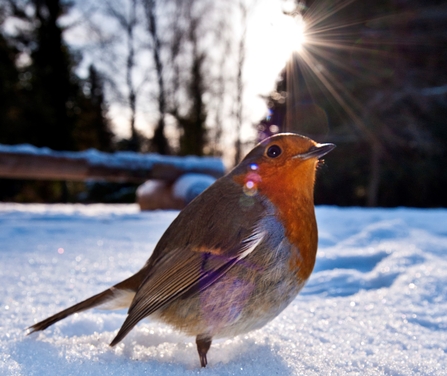1. The robin is the most well-known festive symbol of all. Originating from the Victorian trend of sending Christmas cards, the red coat of the postman gained him the nickname ‘robin redbreast’. Birds like the robin need our kindness in the wintry months. Why not put up a bird table and provide fatty foods like sunflower seeds and peanuts? It could make all the difference to the wildlife in your garden.
2. Another garden bird was made a festive icon by the line ‘four calling birds’ in the famous carol. The words refer to a ‘colly’ bird, commonly known as a blackbird. ‘Colly’ was an old English term for ‘coal’, as in ‘coal black’. Happily, the blackbird is now doing quite well in the UK, but the winter is still a difficult time for all garden birds, so any help you can provide would be invaluable.
3. Contemporary Christmas songs play just as central a role in our festivities today. Nature often features in these modern ditties, just as it always has. One of the most ubiquitous Christmas songs contains the lyrics:
Gone away is the bluebird
Here to stay is a new bird
He sings a love song as we go along
Walking in a winter wonderland
Referring to winter migration, this is a reminder to enjoy the overwintering birds while they’re here. Head to our viewpoint at Chew Valley Lake, where there’s always a fine range of winter wildlife to see.
4. Holly has been used as decoration since the Roman times, with the red berries lending a note of festive cheer. Planting a holly bush in your garden or in a pot is a great idea for wildlife. The berries provide essential food for birds, and ivy nectar is a great winter nectar source for insects.
5. Sneaking a kiss under the mistletoe probably originates from a Norse legend, in which the goddess Frigga declared mistletoe a symbol of love. The berries of this parasite plant are a favourite of birds such as Blackcaps, which eat the fat-rich pith. You can help it to spread by growing it in your own garden. Extract the seeds from the berries of a cutting and wipe them on a young branch of a suitable tree, such as an apple.


